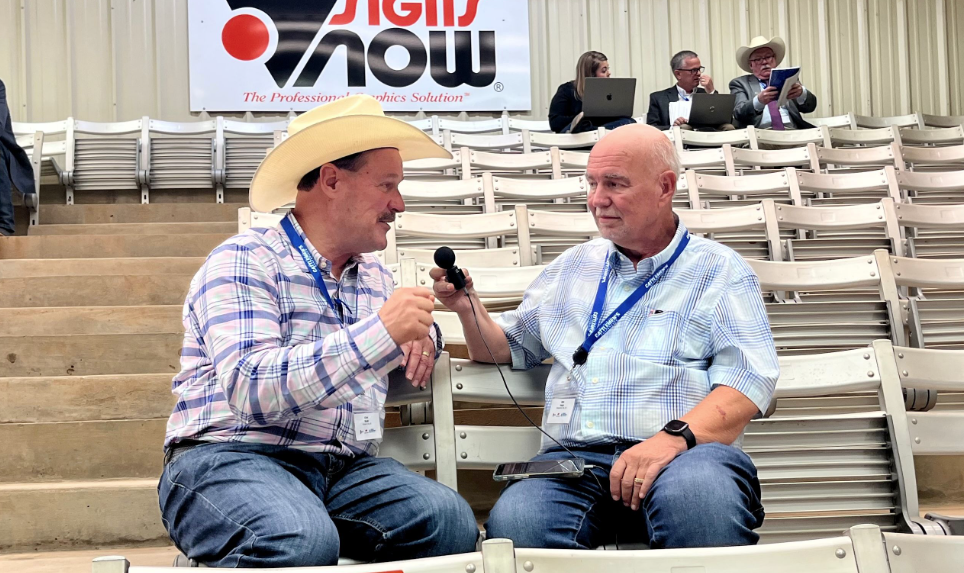
At Cattlemen’s Conference, Senior Farm and Ranch Broadcaster, Ron Hays, caught up with the Executive Director of the American International Charolais Association and former animal science department head at Oklahoma State University, Clint Rusk, about the future of the cattle industry.
The most valuable part of the conference, Rusk said, was the ability to see individuals in the cattle industry come together and talk about operational goals and goals of the industry as a whole.
“Some of the things that actually end up changing our industry are some of the discussions that happen in the hallway, or in the evening,” Rusk said. “But just getting people to come together and openly talk about their feelings is really good.”
These conversations had over the course of the conference, in and out of sessions, Rusk said, are bound to change the industry in a positive way. Many points of discussion at the conference aimed to leave cattlemen with questions to take home and apply when they are working their operations.
“When I left here, the thing we talked a lot about at the university was ‘how do we feed the world in 2050,’” Rusk said. “I am not going to be here in 2050, but some of my children will still be involved in 2050, and other people. I think we are going to have to use the best technology and the best crossbreeding systems we can.”
Each day, grass acreage becomes smaller as the population grows, Rusk said, so producing enough protein is going to become more and more critical.
Rusk also talked about the value of raising cows that fit one’s environment.
“The cows that are most successful out around Leedey and Guymon and Woodward are probably different than the cows that survive in eastern Oklahoma where they get more rain and have more forage on a regular basis, so the cows don’t all need to be the same size,” Rusk said.
As commercial producers, Rusk said refusing to crossbreed means leaving money on the table.
“That extra heterosis produces healthier calves, calves that grow faster, and there are just a number of advantages when you combine two complementary breeds,” Rusk said.
The Beef Buzz is a regular feature heard on radio stations around the region on the Radio Oklahoma Ag Network and is a regular audio feature found on this website as well. Click on the LISTEN BAR for today’s show and check out our archives for older Beef Buzz shows covering the gamut of the beef cattle industry today.















